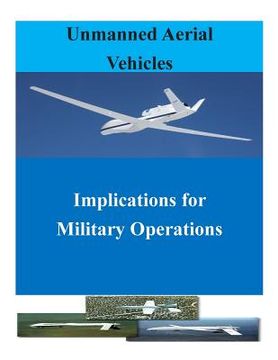Share
Unmanned Aerial Vehicles: Implications for Military Operations (in English)
Air University Press
(Author)
·
Createspace Independent Publishing Platform
· Paperback
Unmanned Aerial Vehicles: Implications for Military Operations (in English) - Air University Press
$ 11.96
$ 14.95
You save: $ 2.99
Choose the list to add your product or create one New List
✓ Product added successfully to the Wishlist.
Go to My WishlistsIt will be shipped from our warehouse between
Monday, June 17 and
Tuesday, June 18.
You will receive it anywhere in United States between 1 and 3 business days after shipment.
Synopsis "Unmanned Aerial Vehicles: Implications for Military Operations (in English)"
The development of uninhabited aerial vehicles (UAVs) could potentially revolutionize how military force is used in the future. While the early operational experiences with UAVs show great promise, their full range of capabilities is largely unknown. However, it is clear that these technologies will enable military forces to use aerospace power more efficiently, which means at lower cost and with less risk to the humans who pilot aircraft.The broader question is the wisdom of using unmanned aerial vehicles for employing lethal force, and in particular which air power missions are best accomplished by uninhabited, piloted, and autonomous vehicles. The corollary is to examine the essential roles of human pilots or operators in aerospace operations in the twenty-first century. Since it is common to draw distinctions between vehicles with an on-board pilot, vehicles with off-board operators, and autonomous vehicles, this study explores the essential role of pilots and contrasts it with the roles of remotely piloted and autonomous vehicles.The assumption is that piloted, remotely piloted, and autonomous vehicles have advantages and disadvantages in military operations, and that these vary in strategic significance for different levels of conflict. Since it is essential for the U.S. defense establishment to consider the strategic and technological implications of these types of aerial vehicles, this study is devoted to addressing the issues raised by the new generation of aerial vehicles.
- 0% (0)
- 0% (0)
- 0% (0)
- 0% (0)
- 0% (0)
All books in our catalog are Original.
The book is written in English.
The binding of this edition is Paperback.
✓ Producto agregado correctamente al carro, Ir a Pagar.

